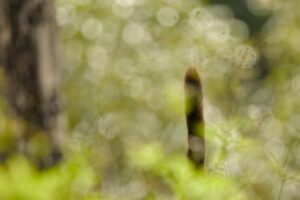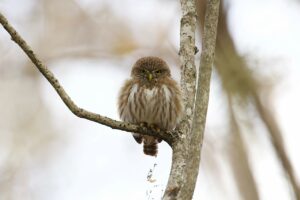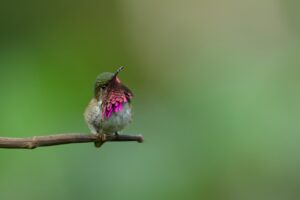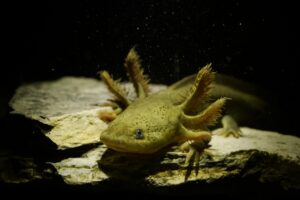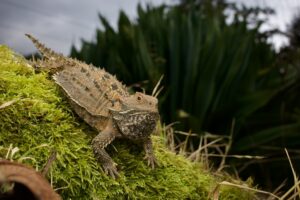Japanese Grass Lizard, a native species of Japan, stands out as a shining gem in the diverse tapestry of Japanese wildlife. With a modest length of about 6-7 cm and a tail reaching 2-3 times its body length, this small reptile boasts distinctive features. Its brown dorsal patterns, white vertical stripes on the sides, and the rough texture of its scales harmonize with Japan’s natural environment, showcasing its adaptation to the unique ecosystems found in the region.
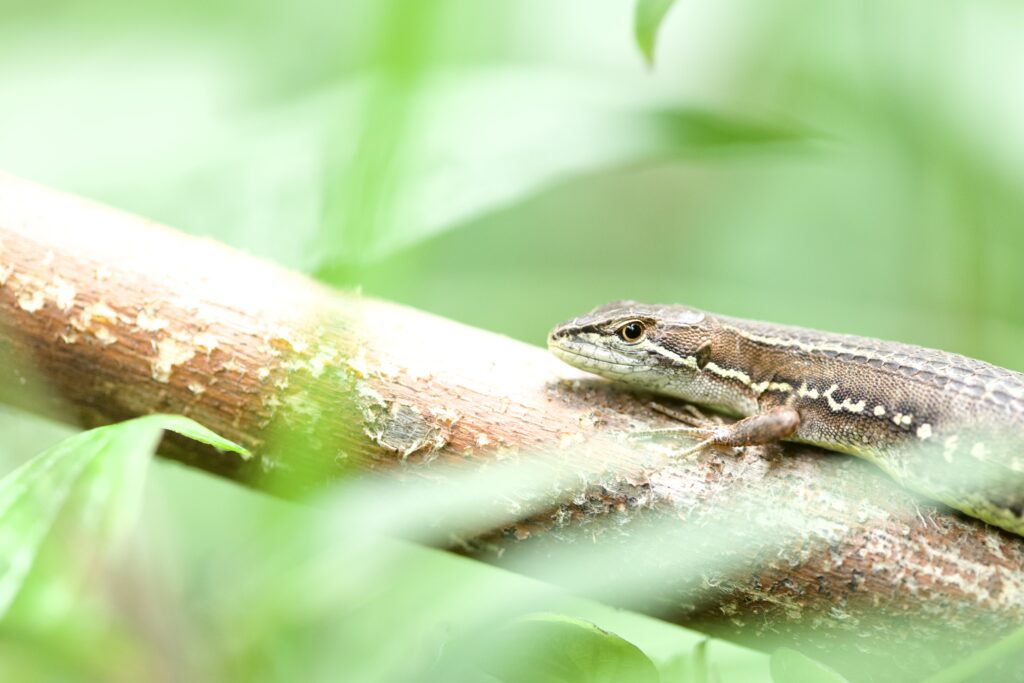
Emphasizing Japanese Endemism
The Japanese Grass Lizard is widely distributed from Hokkaido to Kyushu, covering various regions of Japan throughout the seasons. Even in urban settings, these lizards can be observed, living harmoniously within the unique habitats of Japan. Consequently, protecting and adapting to the changes in its environment is not just a responsibility but a crucial component of Japan’s ecological landscape.
Aesthetic Features
The adult lizard’s dorsal surface displays shades of brown or dark brown with distinctive patterns. The tail fades toward the tip, and black-brown vertical stripes parallel to white stripes grace its sides. Noteworthy features include large ear openings, a substantial snout, and the characteristic rough texture of its scales. These elements distinguish the Japanese Grass Lizard from other species, highlighting its endemism to Japan.
Integral to the Ecosystem
Adapting to diverse environments such as plains and low mountain grasslands, the Japanese Grass Lizard preys on small invertebrates like insects and spiders. However, urbanization and development projects pose threats to its habitats. Therefore, safeguarding this endemic species and its ecosystem is a responsibility that must be deeply ingrained in our consciousness.

The Japanese Grass Lizard, as a part of Japan’s natural heritage, not only showcases its endemism and beauty but also serves as a reminder of the importance of respecting and preserving the natural environment.


